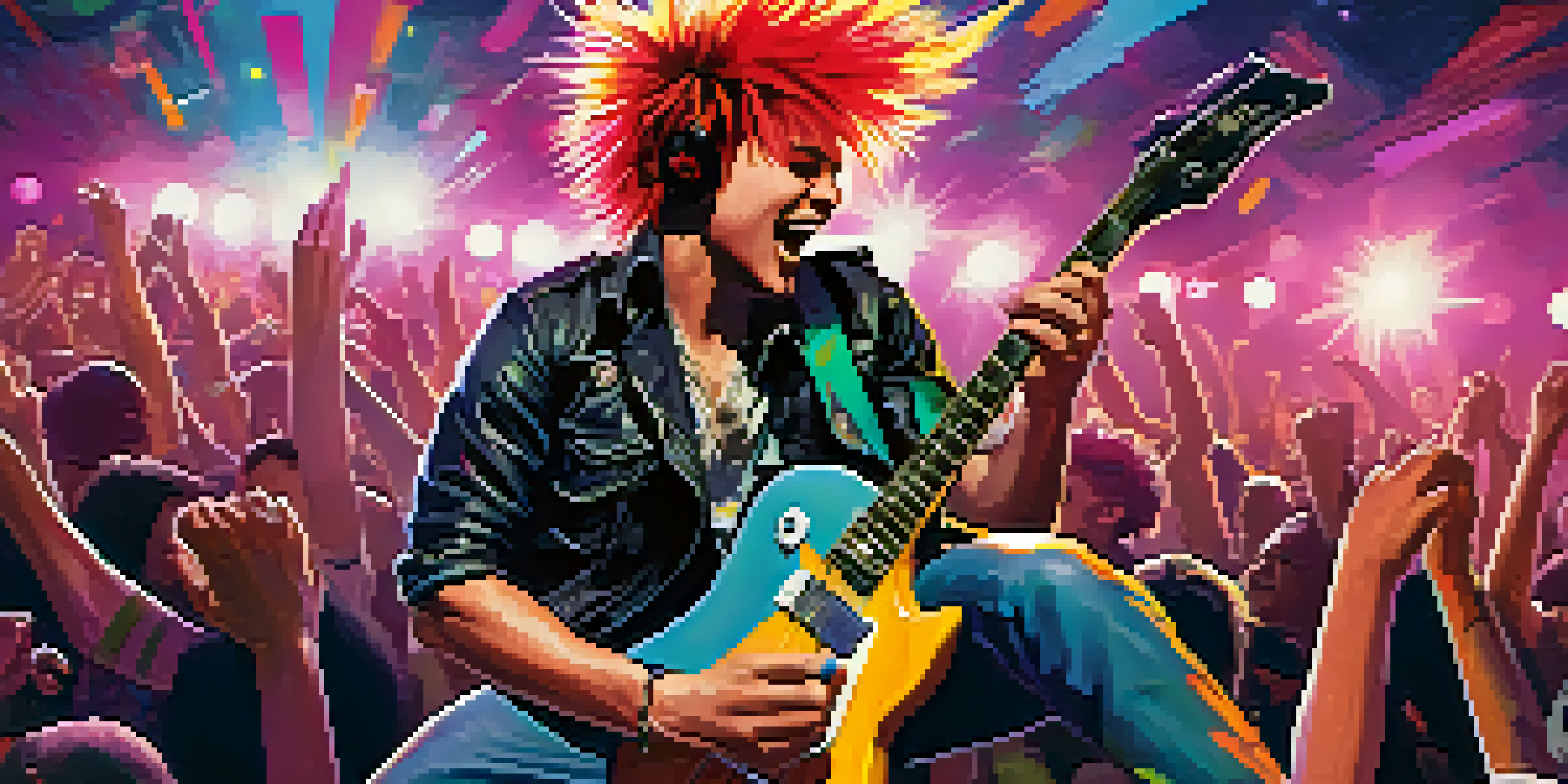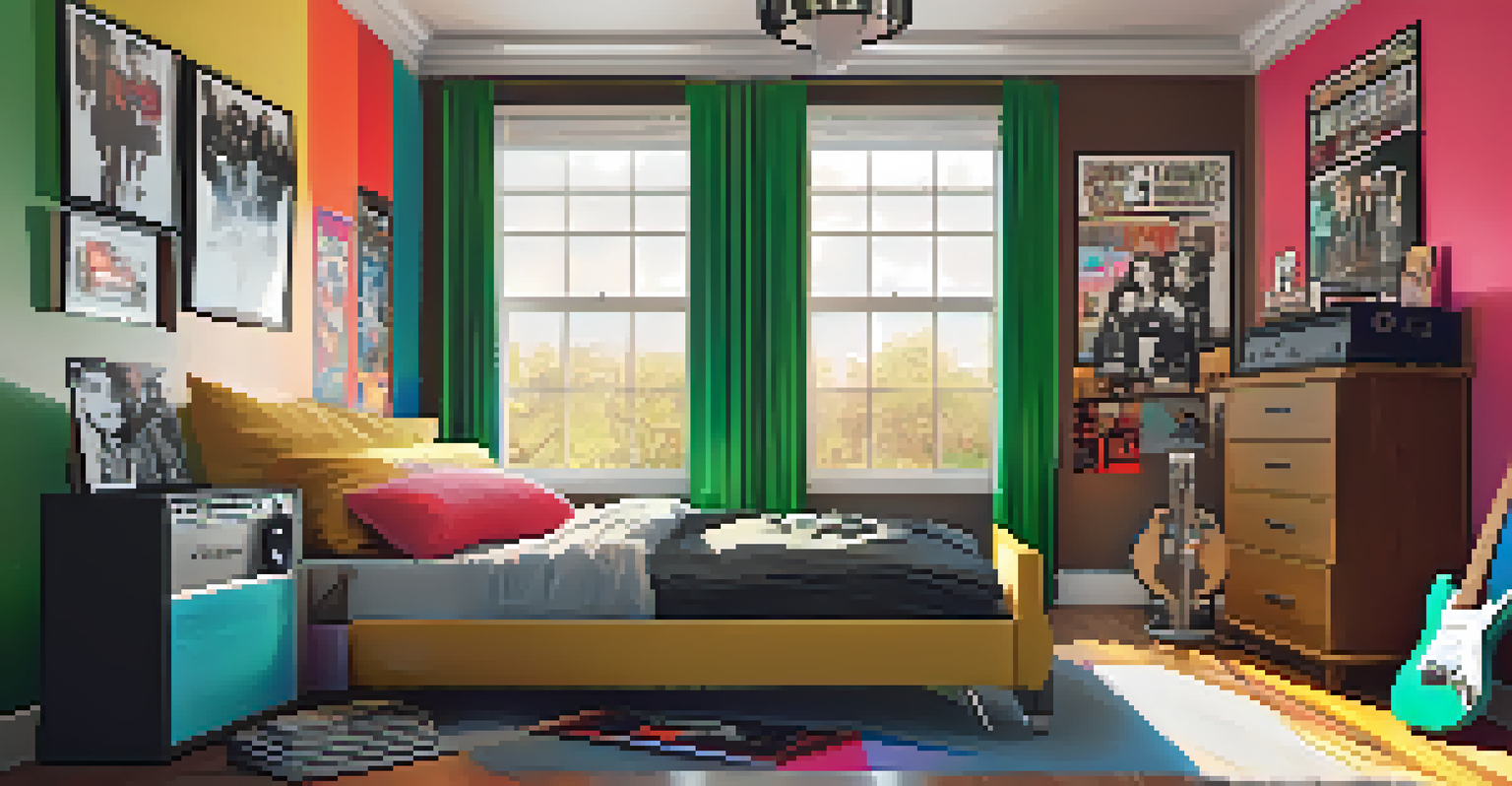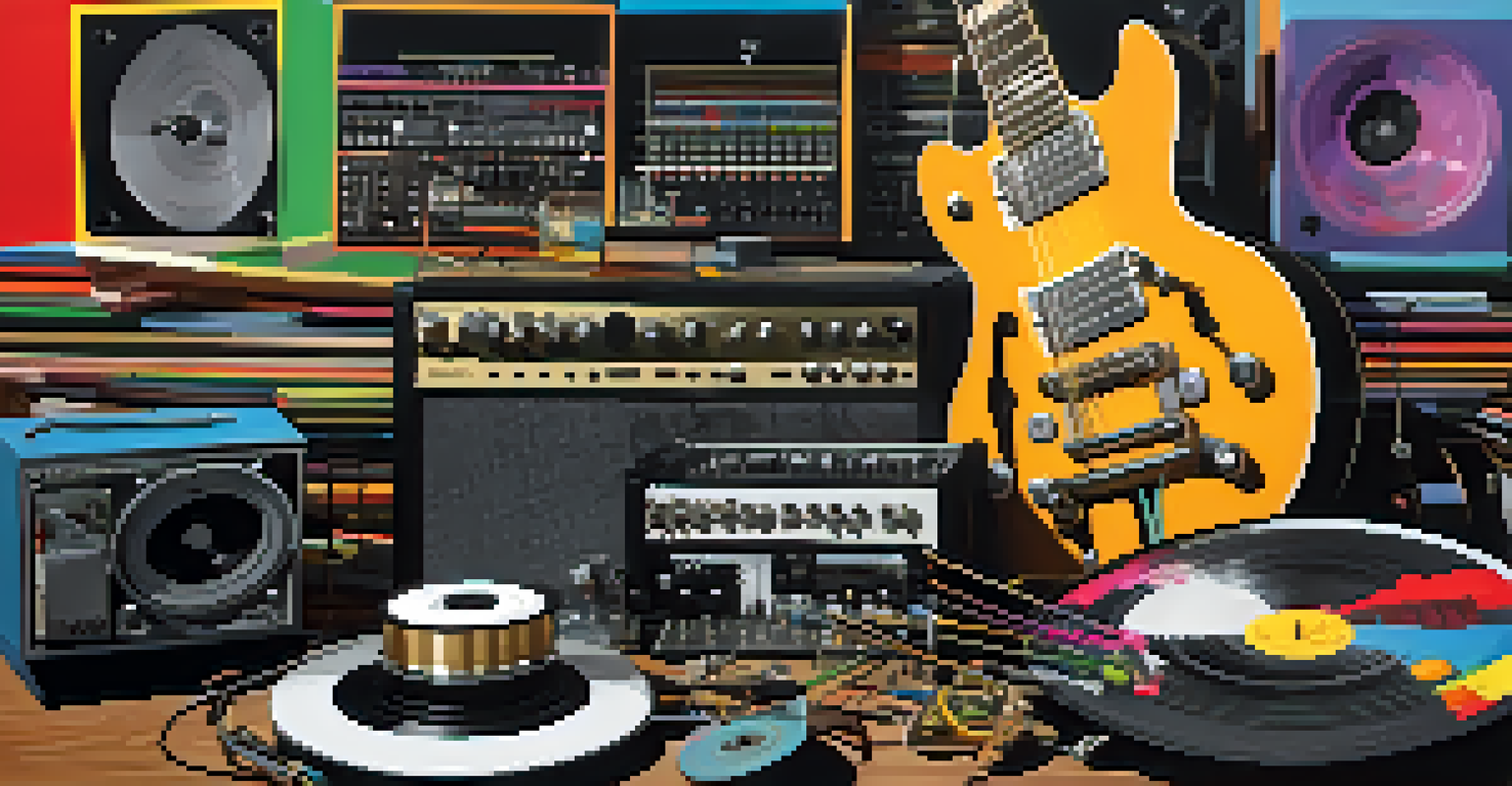Pop-Punk Revival: The Return of Genre Blending in Music

Understanding the Pop-Punk Phenomenon
Pop-punk has long been a staple of youth culture, blending catchy melodies with the raw energy of punk rock. This genre emerged in the late 1970s and hit its peak in the early 2000s, giving us iconic bands like Blink-182 and Green Day. Today, we’re witnessing a pop-punk revival, as both new and old artists are reinterpreting this sound for a modern audience.
Pop-punk is a genre that captures the spirit of youth and rebellion, resonating with listeners across generations.
The resurgence is not just about nostalgia; it reflects a broader trend in music where genres are increasingly blurred. Young fans are drawn to the catchy hooks and relatable lyrics, while older listeners reminisce about their teenage years. This cross-generational appeal is a driving force behind the pop-punk revival.
By examining how pop-punk resonates with different generations, we can better understand its staying power. The themes of rebellion, heartbreak, and self-discovery continue to resonate, making it a timeless genre that adapts to the current musical landscape.
The Role of Genre Blending in Music Today
Genre blending is at the heart of recent musical trends, with artists pulling influences from various styles to create something fresh and exciting. Pop-punk, once a standalone genre, is now often fused with elements of hip-hop, electronic, and even country music. This mix not only attracts a wider audience but also showcases the versatility of artists today.

For instance, artists like Machine Gun Kelly have successfully merged pop-punk with rap, offering a new sound that appeals to fans of both genres. This crossover appeal opens up collaboration opportunities and introduces listeners to different musical influences, enhancing the overall listening experience.
Pop-Punk's Revival and Appeal
The resurgence of pop-punk reflects a blend of nostalgia and modern influences, engaging fans across generations.
As genre boundaries continue to dissolve, we’re likely to see more innovative sounds emerging. This blending allows artists to redefine their identities and reach new audiences, contributing to the vibrancy of the current music scene.
Key Artists Leading the Pop-Punk Revival
Several artists are at the forefront of the pop-punk revival, breathing new life into the genre. Bands like Waterparks and State Champs are infusing their music with both nostalgia and modern flair, attracting a diverse fanbase. Their fresh takes on pop-punk highlight how the genre can evolve while still paying homage to its roots.
Music is a reflection of our lives, and pop-punk speaks to the challenges and triumphs of growing up.
Similarly, solo acts such as Olivia Rodrigo and YUNGBLUD are incorporating pop-punk elements into their music, showcasing its relevance in today’s pop landscape. These artists leverage the emotional resonance of pop-punk, connecting with listeners on a personal level through their lyrics and sound.
Through their innovative approaches, these artists inspire a new generation to explore pop-punk, ensuring its legacy continues. Their ability to blend traditional pop-punk with contemporary influences creates a dynamic listening experience that captivates both new fans and longtime followers.
The Impact of Social Media on Music Trends
Social media has revolutionized how music is discovered and consumed, playing a pivotal role in the pop-punk revival. Platforms like TikTok and Instagram allow artists to share their music directly with fans, bypassing traditional marketing methods. This direct connection fosters a sense of community and encourages fans to engage with the music in real-time.
For example, viral trends often feature snippets of pop-punk songs, introducing younger audiences to the genre. These platforms serve as a breeding ground for creativity, where users remix and reinterpret songs, further fueling interest in pop-punk music. It’s a cycle of engagement that keeps the genre alive and thriving.
Genre Blending Shapes Music
Artists today are merging pop-punk with various genres, creating innovative sounds that attract diverse audiences.
Moreover, social media allows for instant feedback, enabling artists to adapt their sound based on audience reactions. This responsiveness can lead to the creation of music that resonates deeply with fans, enhancing the genre's relevance in today’s fast-paced digital landscape.
The Evolution of Lyrics in Pop-Punk
Lyrics have always been a vital part of pop-punk, often reflecting the angst and challenges of youth. However, the lyrical themes have evolved alongside the genre itself, adapting to contemporary issues faced by today’s youth. Modern pop-punk artists are tackling topics like mental health, identity, and social issues, making their music more relatable than ever.
For instance, Olivia Rodrigo’s hit songs address heartbreak and self-discovery, resonating strongly with a generation grappling with similar feelings. This shift in lyrical focus allows pop-punk to remain relevant and impactful, as it speaks to the experiences of today’s youth.
By addressing these themes, artists create a safe space for listeners to connect and express their emotions. The evolution of lyrics in pop-punk not only reflects societal changes but also fosters a sense of solidarity among fans.
Pop-Punk's Influence on Other Genres
The influence of pop-punk extends far beyond its own genre, impacting various styles of music. Elements of pop-punk can be found in mainstream pop, indie, and even alternative rock, as artists borrow its catchy hooks and high-energy beats. This cross-pollination enriches the musical landscape, encouraging innovation and experimentation.
Artists like Halsey and Paramore have incorporated pop-punk influences into their music, blending it with electronic and pop elements. This fusion creates a unique sound that captures the attention of diverse audiences, proving that pop-punk’s impact is far-reaching.
Social Media Drives Music Trends
Platforms like TikTok and Instagram are crucial for discovering pop-punk, fostering community engagement and real-time feedback.
As pop-punk continues to inspire artists across genres, it reinforces the idea that music is a collaborative and ever-evolving art form. This blending of styles not only keeps pop-punk alive but also allows it to flourish in new and exciting ways.
The Future of Pop-Punk and Genre Blending
Looking ahead, the future of pop-punk appears bright as artists continue to experiment and blend genres. The revival has sparked renewed interest, allowing for creative freedom and innovation within the genre. This opens up exciting possibilities for collaborations and new sounds that could redefine pop-punk for future generations.
As music continues to evolve, we can expect pop-punk to adapt, incorporating emerging influences and trends. Artists will likely explore new themes and sounds, ensuring the genre remains relevant in an ever-changing musical landscape.

Ultimately, the pop-punk revival is more than just a trend; it’s a testament to the resilience and adaptability of music. As artists blend genres and push boundaries, they pave the way for a vibrant future that honors the past while embracing the new.